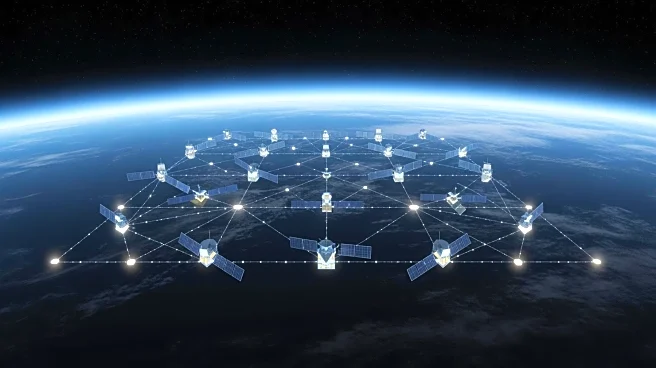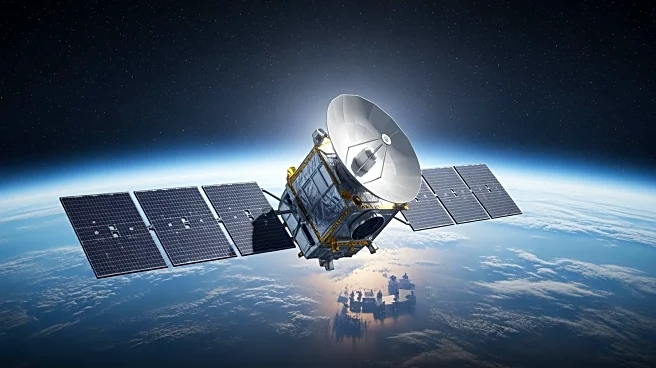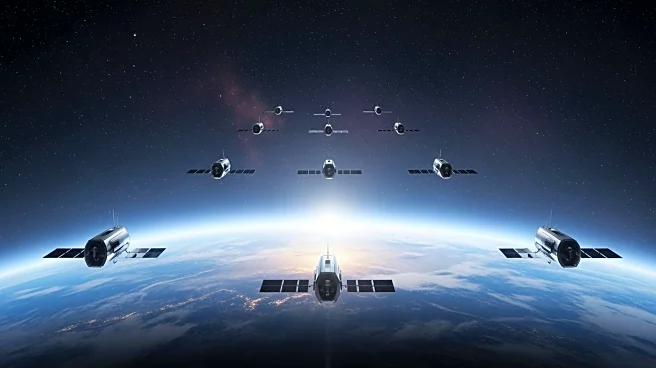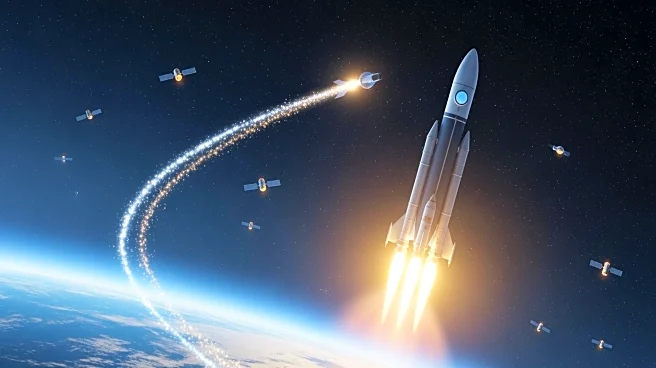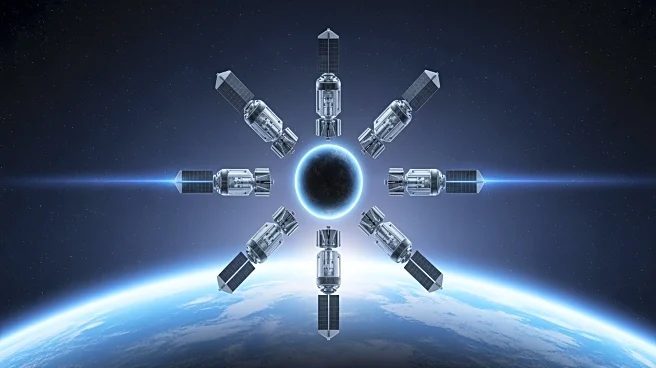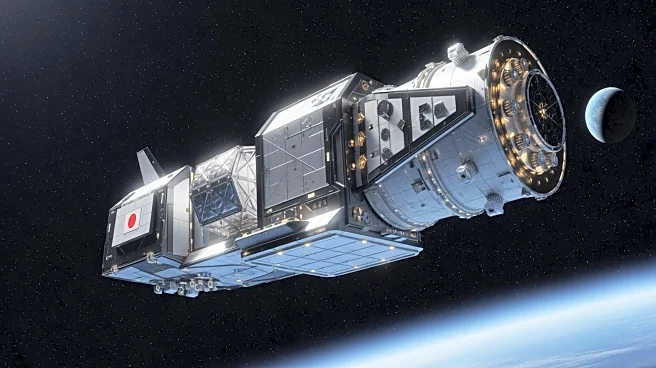What's Happening?
SpaceX, under the leadership of Elon Musk, has launched its 10,000th Starlink satellite, marking a significant milestone in space infrastructure. The Starlink program, aimed at providing global satellite internet, now constitutes two-thirds of all active
satellites orbiting Earth. This achievement underscores SpaceX's dominance in the space launch industry, with plans to expand the Starlink satellite array to 42,000, pending regulatory approval. The company aims to handle 90% of the world's payload mass into space by 2025, further solidifying its position as a leader in space technology.
Why It's Important?
The expansion of SpaceX's Starlink satellites has profound implications for global internet connectivity and space governance. By controlling a significant portion of space infrastructure, SpaceX influences the dynamics of satellite internet provision, potentially affecting telecommunications industries worldwide. The rapid growth of Starlink also raises concerns about orbital traffic management and spectrum conflicts, necessitating international coordination and evolving regulatory frameworks to ensure sustainable expansion and prevent space congestion.
What's Next?
SpaceX plans to continue expanding its satellite network, with regulatory approval being a key factor in achieving its goal of 42,000 satellites. The company is poised to break more launch records, further asserting its capability in space endeavors. As SpaceX progresses, there will be increased scrutiny on regulatory policies to manage the growing number of satellites and address potential conflicts in orbital space.
Beyond the Headlines
The dominance of SpaceX in satellite launches could lead to shifts in global telecommunications, with potential impacts on internet accessibility and pricing. The company's influence in space technology may also drive innovation and competition, prompting other entities to enhance their capabilities in satellite deployment and space exploration.
